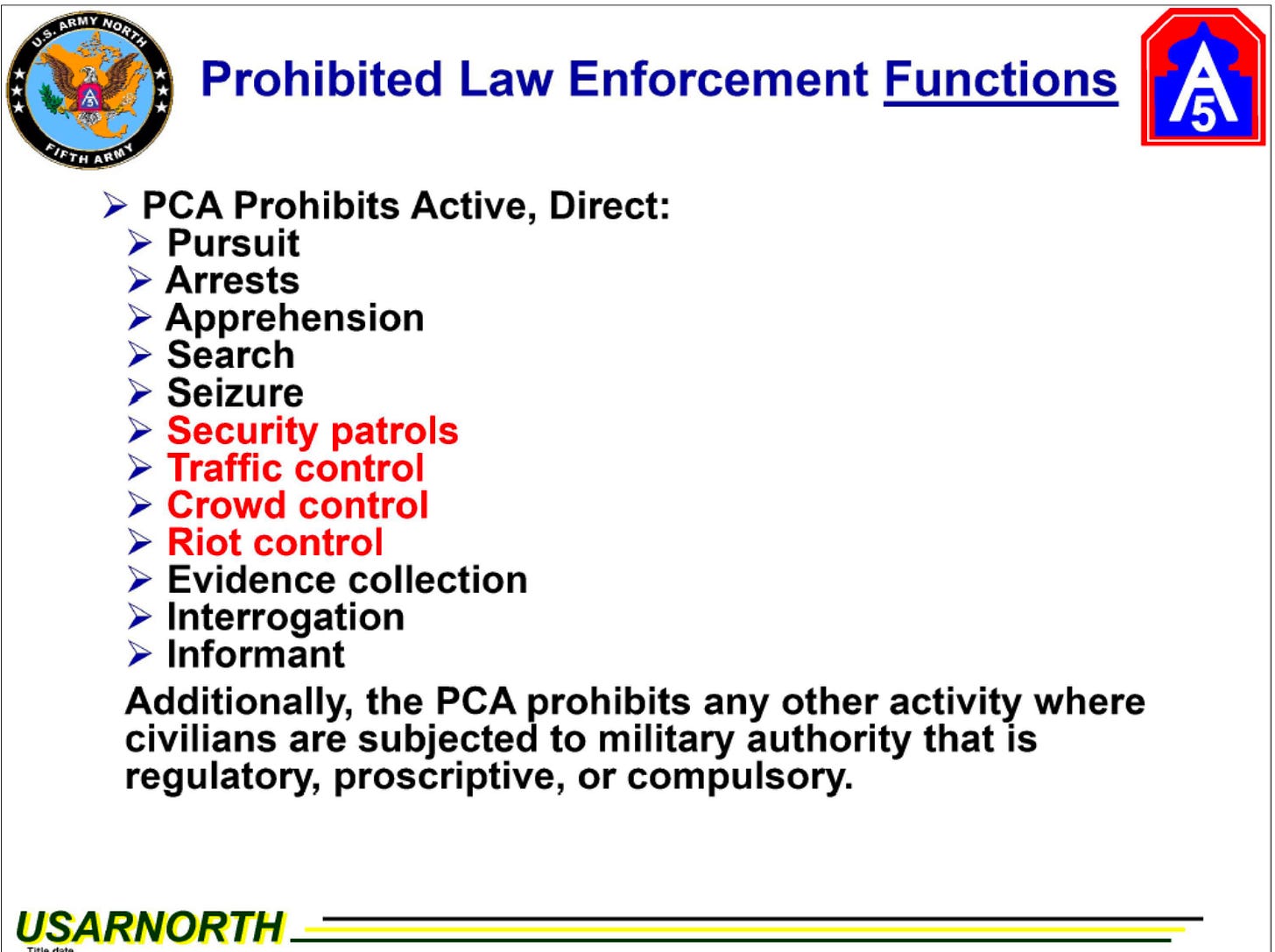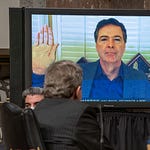With the military currently on U.S. streets in Los Angeles and Washington, D.C., the public needs careful and precise reporting about the ramifications of this ruling.
That’s because these rulings shape what happens on our streets.
Delivering a decisive blow to Donald Trump’s designs to use the military for civilian law enforcement, a federal judge on Tuesday found that his government violated the Posse Comitatus Act in California.
“The evidence at trial established that Defendants systematically used armed soldiers (whose identity was often obscured by protective armor) and military vehicles to set up protective perimeters and traffic blockades, engage in crowd control, and otherwise demonstrate a military presence in and around Los Angeles,” Senior U.S. District Judge Charles Breyer wrote in a 52-page order. “In short, Defendants violated the Posse Comitatus Act.”
The lead defendant in the case is Donald J. Trump.
Legal AF’s Michael Popok and I unpack the consequences of that ruling in the video above and a separate explainer below.
A “national police force”
In early June, Trump ordered the California National Guard to respond to immigration-related protests in Los Angeles, first with a force of nearly 5,000 troops, a number larger than the total deployed to Afghanistan in the first three months after Sept. 11, 2001.
California Gov. Gavin Newsom (D) quickly sued over the deployment, and the resulting case of Newsom v. Trump has been determining what legal limits will exist, if any, over the use of the military on civilian streets in the United States.
California Attorney General Rob Bonta described the ruling as an affirmation that “President Trump is not King, and the power of the executive is not boundless.”
“For more than two months, the President has engaged in political theater, using National Guard troops and Marines as pawns to further his anti-immigrant agenda,” Bonta wrote in a statement. “In doing so, he trampled on one of the very basic foundations of our democracy: That our military be apolitical and the activities of troops on U.S. soil be extremely limited to ensure civil liberties and protect against military overreach.”
In the wake of the litigation, the Pentagon has withdrawn all but 300 troops, and this order does not force the remainder to leave. Instead, Judge Breyer’s narrow ruling orders the remainder to follow the nearly 150-year-old law.
“The injunction applies only to Defendants’ use of the National Guard in California, not nationally,” Breyer wrote. “Defendants are not required to withdraw the 300 National Guard troops currently stationed in Los Angeles, nor are they barred from using troops consistent with the Posse Comitatus Act.”
Despite the limited scope, Breyer acknowledged that Trump’s designs are far larger.
“President Trump and Secretary Hegseth have stated their intention to call National Guard troops into federal service in other cities across the country—including Oakland and San Francisco, here in the Northern District of California—thus creating a national police force with the President as its chief,” the ruling states.
The Supreme Court and Ninth Circuit tied Breyer’s hands from offering more sweeping relief. With limited exceptions, the Supreme Court’s ruling in Trump v. CASA all but abolished nationwide injunctions earlier this year. The Ninth Circuit found Trump likely had the power to issue his order to deploy the troops, subject to the constraints of the Posse Comitatus Act.
“All the way from the top”
During a three-day trial earlier this summer, Trump’s Justice Department floated a novel legal theory supposedly allowing the military to engage in crowd control, traffic control, riot control and security patrols on civilian streets: a so-called “constitutional exception” to the Posse Comitatus Act, which the judge rejected.
“In fact, these violations were part of a top-down, systemic effort by Defendants to use military troops to execute various sectors of federal law (the drug laws and the immigration laws at least) across hundreds of miles and over the course of several months—and counting,” the ruling said. “The instructions to train Task Force 51 on the purported constitutional exception and thereby excuse unlawful military conduct came ‘all the way from the top’ of the Department of Defense.”
Judge Breyer had been quoting the testimony of Maj. Gen. Scott Sherman, the top commander of Task Force 51, behind the Los Angeles troop deployment.
Trial evidence showed that the task force knew that the Posse Comitatus Act prohibited these uses of the military, but the bullet points in red text were supposedly “constitutional exceptions” dictated from above the general.
“That instruction was incorrect,” Breyer wrote. “There is no exception to the Posse Comitatus Act for such conduct, and neither President Trump’s June 7 memorandum nor Secretary Hegseth’s June 23 memorandum changed that.”
The judge paused his ruling until Sept. 12 to make way for an inevitable appeal.
Although Trump routinely discusses using the military for civilian law enforcement, his Justice Department did not even claim the power to do so in court. Their legal defenses at trial involved denying Posse Comitatus Act violations and arguing that it could not be enforced through a civil injunction. If the ruling stands, it could serve as a blueprint for similar rulings across the country for other cities that Trump has placed in his crosshairs.















